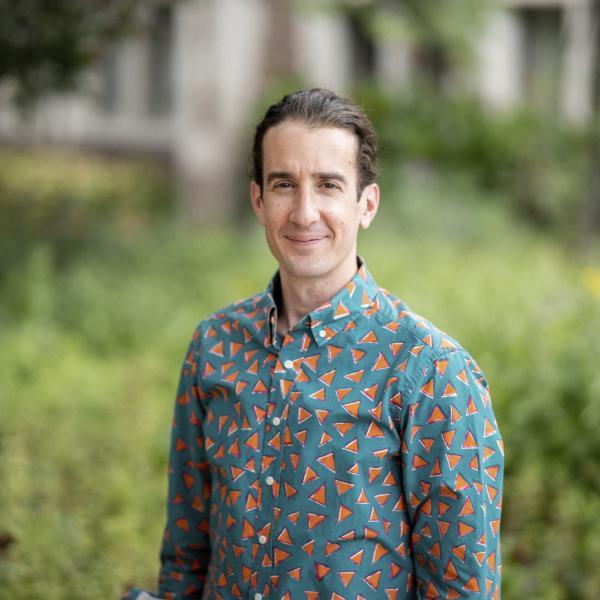Study at Tyson Research Center fuels global investigation into the role of underground fungi as drivers of global forest diversity.

A large study involving 43 research plots in the Forest Global Earth Observatory (ForestGEO) Network — including a swath of trees at Tyson Research Center — has helped clarify the power of underground fungi to shape forests. From the tropics to the far north, fungi in the soil seem to directly determine the number and types of trees that can thrive in a given area, said Jonathan Myers, an associate professor of biology whose work at Tyson contributed to the global findings.
The study was published in Communications Biology.
Many trees depend on a special partnership with mycorrhizal fungi that grow around their roots. The fungi provide the tree with nitrogen, phosphorus, and other nutrients, and the tree gives the fungi carbon in the form of sugar and lipids for energy. “It’s a mutually beneficial arrangement,” Myers said.
The results from Tyson and elsewhere suggest that fungi are more than casual acquaintances with their tree companions: the fungi drive diversity — or lack thereof.
Specifically, the underground back-and-forth helps explain why tropical forests can support multiple species of trees in a small area, why forests in the far north and south are often dominated by just a few species, and why the oak and hickory forests at Tyson fall near the middle of the diversity spectrum. “The study really zeroed in on one of the basic patterns in ecology, which is that forests become more diverse the closer you get to the equator,” Myers said.
Researchers used mathematical models and tree surveys to track the impact of different types of mycorrhizal fungi on diversity. As Myers explained, these come in two main types: arbuscular mycorrhizae (AM) and ectomycorrhizae (EM). AM fungi — “living fossils” that are essentially identical to the fungi that partnered with the earliest plants known to science — are especially abundant in the tropics. EM fungi, a newer arrival to the scene, become increasingly common farther from the equator.
The study suggests that the shift from AM to EM has had major consequences for tree diversity. AM fungi are equal-opportunity partners that will support just about any AM tree species that happen to live nearby. Because the fungi are not too picky, any AM seedling or sapling trying to grow in a given spot can expect a boost from the local mycorrhizae.
EM fungi, in contrast, are much more discerning and will only help certain tree species — spurning all others. As a result, a sapling that depends on EM fungi is more likely to thrive if it can share space — and fungi — with a member of its own species. In that way, choosy fungi encourage communities of trees of the same species to cluster together.
EM fungi also help protect their favored species of trees from diseases. As Myers explained, this helpful action actually makes forests less diverse. If a forest suffers a disease outbreak that targets a specific type of tree, it could be risky to grow too close to a neighbor of the same species. But EM fungi reduce that risk, making it safer for trees to grow close to their own kind. AM fungi don’t offer as much disease protection, so trees in tropical forests find safety in diversity.

A better understanding of fungi helps put the trees of Tyson into perspective, Myers said. Roughly halfway between the tropics and the boreal forests of northern Canada, Tyson is home to both AM and EM fungi. It also boasts a moderate mix of trees — mostly varieties of hickories and oaks — that is neither wildly diverse nor unrelentingly monotonous. Tyson’s position between the extremes made it a valuable source of data for the global study, Myers said.
“We have just over 40 different species of trees on the plot that we studied, which is the size of about 45 football fields,” Myers said. “In most tropical forests, there would be hundreds of different species in a plot that size. In the boreal forests of northern Canada, there might be fewer than 10.”
To date, more than 140 students and technicians have contributed to the Tyson ForestGEO Plot Project, including 60 undergraduate students, 66 high school students, and 20 research technicians. The project is funded in part by the National Science Foundation and WashU’s International Center for Advanced Renewable Energy and Sustainability (I-CARES). Tyson Research Center has also provided significant financial support, including stipends for students.
To further understand the forces driving forest diversity, researchers should study exactly how fungi interact with tree roots at a physical and chemical level, Myers said. “We have a lot more work to do underground,” he said.





